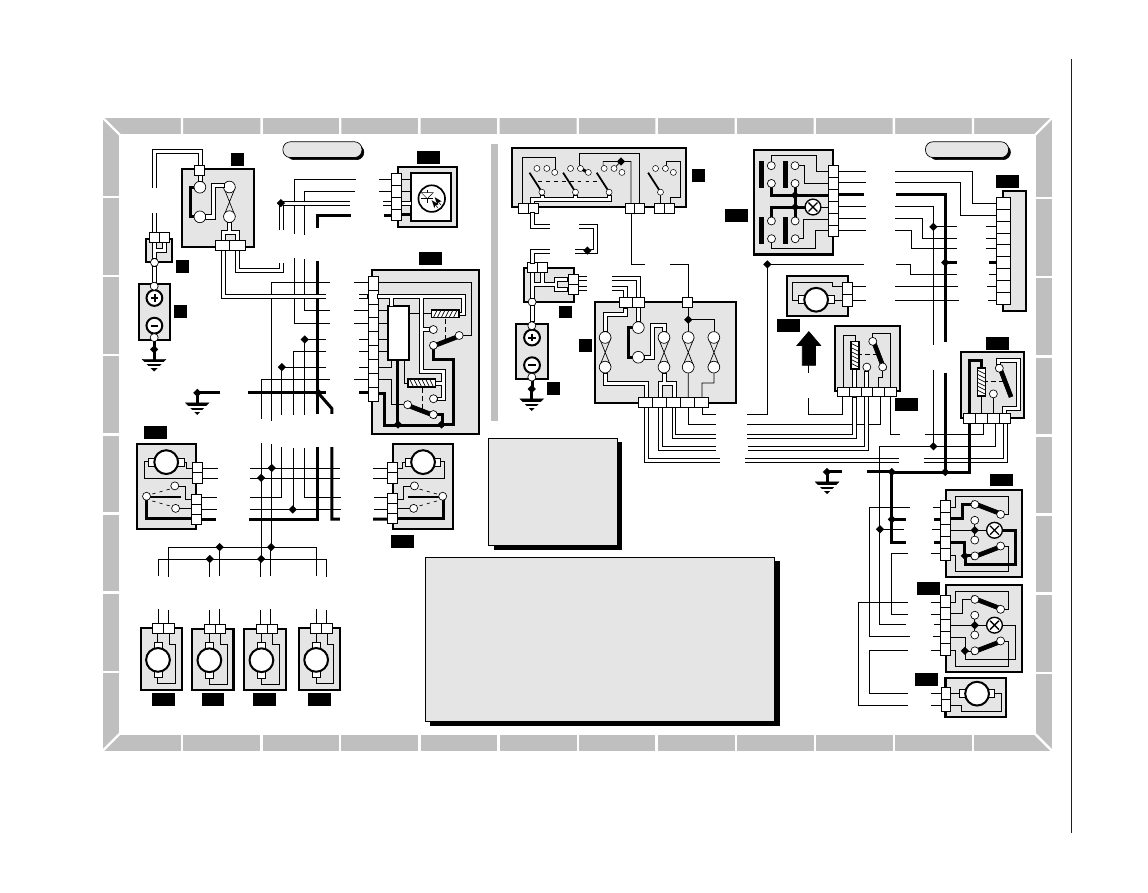Peugeot 405 Haynes (petrol). Manual - part 35

12•54
Wiring diagrams
B
A
C
D
E
F
G
H
J
K
L
M
2
1
3
4
5
6
7
8
B
A
C
D
E
F
G
H
J
K
L
M
2
1
3
4
5
6
7
8
Diagram 13 : Central locking and electric windows - later models
H29192
T.M.MARKE
1
Battery
2
Battery +ve control unit
3
Fusebox
4
Ignition switch
122 Door locking control unit
123 Infra red receiver
124 RH front door lock
125 LH front door lock
126 RH rear door lock
127 LH rear door lock
128 Tailgate lock motor
129 Fuel filler lock motor
130 Electric window and sunroof relay
131 Electric window and sunroof
reconnection relay
132 Instantaneous electric window unit
133 RH front window motor
134 RH door switch for RH window
135 RH door switch for LH window
136 LH door switch for LH window
137 LH front window motor
Key to items
2
1
3
1
7A 7B
VE
F15
NR
F8
1
E000
2
NR
BB1
2
1
7
8
NR
1 2
MR
M
MR
M
1
2
3
2
1
BA
4
1
6
9
MR
7
5
8
3
2
1 2
BA
M
1 2
MR
M
MR
M
1
2
3
2
1
BA
B153
B152
B151
627
628
628
627
E020
MPB
M623
M623
M623
M620
6251
6252
M620
6251
6252
6251
6231
M620
6231
6231
6252
6232
M620
628
627
621
6212
621
6211
1 2
BA
M
6213
6216
6215
6213
6202
6201
620
620
6203
6206
6205
6203
123
122
125
124
127
128
129
126
Central locking
2
1
1
E000
2
1
GR
NR
1
2
2
1
4
2
BB5
BB10
AA2
GR
3
F29
NR
F8
1
MR
F28
MR
NR
2
1
BB1
F15
2
1
BB2
F30
3A
6A
7B
2A 4B
NR
5
2
4
1
3
NR
5
2
3
1
B155
B156
A282
12/M5
305
601
B29
B29
M
6050
6040
6051
6052
6042
6041
2
1
GR
4A
1A
3B
2A
2B
4B
5A
5B
1B
RG
4
5
2
6
3
7
BE
A302
A301
6001
600
M600
M603
6005
6052
6051
A301
6040
6050
M602
E020
MPB
4
3
5
2
1
MR
M
1
2
GR
608
607
606
6002
6003
M606
M607
4
3
5
2
1
MR
609
608
609
606
607
Electric windows
BA White
GR Grey
MR Brown
BE Blue
RS Pink
VE Green
Connector colours
BG Beige
JN Yellow
RG Red
OR Orange
VI
Mauve
NR Black
130
131
132
133
134
135
136
137